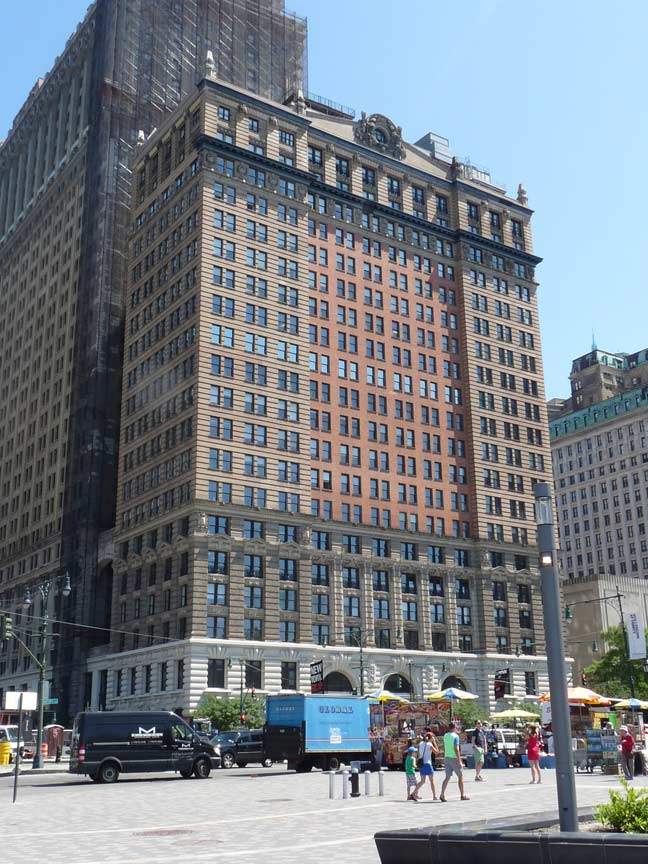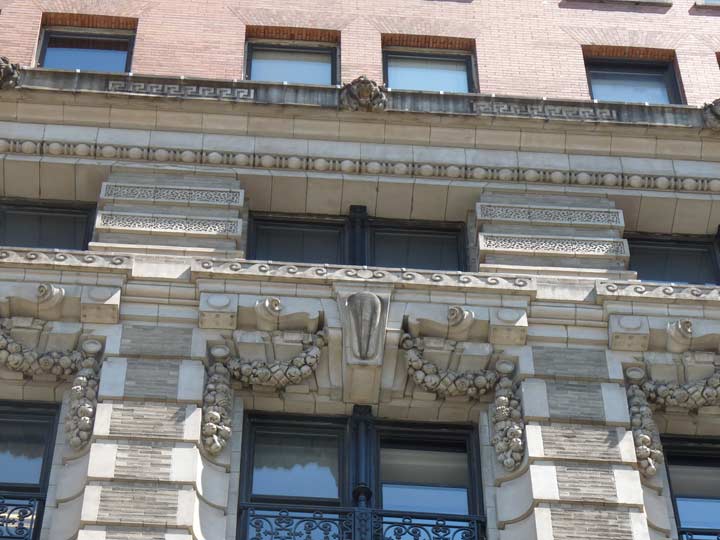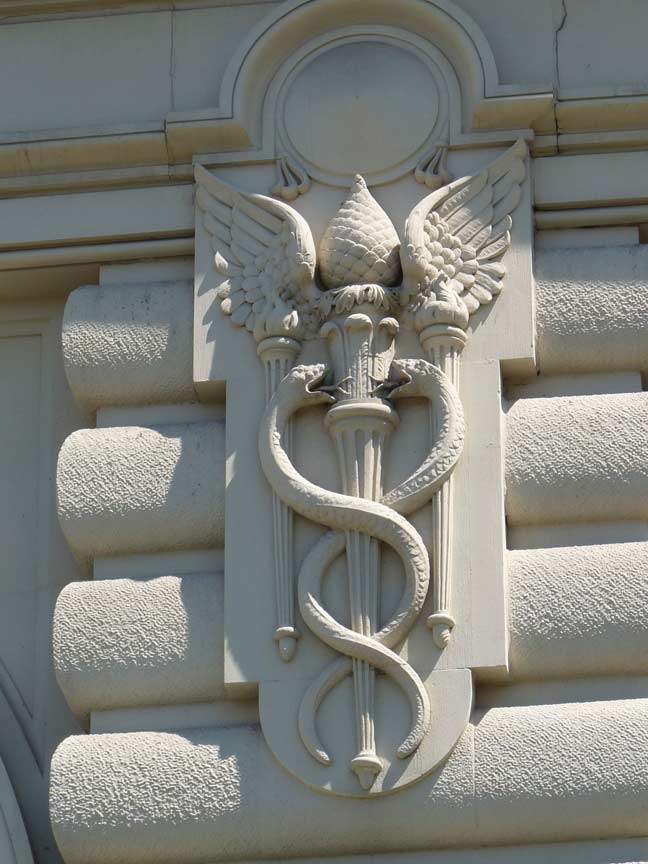
Seen prominently from the north end of Battery Park is the 20-story Whitehall Building at #17 Battery Place, constructed at the height of the Beaux-Arts era from 1902-1904. The architect was Henry Hardenburgh, who has many buildings around town, most notably the Plaza Hotel at Grand Army Plaza at 5th Avenue and Central Park. Shrouded in construction netting behind it is the Whitehall Building Annex, a 31-story tower completed in 1908. Though it was quickly superseded for the title, when it opened the Whitehall Building was Manhattan’s largest office building and took full advantage of views of the awe-inspiring New York Harbor.

Hardenburgh used nearly the entire Beaux-Arts bag of tricks in the construction, with varied limestone and brickwork designs. Note the suggestion of undulating waves on the parapet in a building so close to the water. Above them we see some vermiculated blocks – they have designs cut in them resembling worm tracks.

I had been operating under a false impression for many years. I assumed that every building featuring a staff with a serpent or serpents entwined on it had to do somehow with the medical profession. The symbol is associated with Hermes, the Greek messenger god (the Romans called him Mercurius) and it was generally found on commercial buildings from the 18th and early 19th Centuries. It was also used as a symbol for speed — a caduceus can be found on remaining stations or overpasses of the NY, Westchester and Boston Railroad in the Bronx, much of which is now the Dyre Avenue line (#5 train).
It’s a commonly made mistake equating the caduceus with the medical profession. In medicine the symbol is the Rod of Asclepius, which has one entwined snake, not two.
Since the building does not border Whitehall Street, one may wonder why this is the Whitehall Building. The building, as well as the street, are named for Peter Stuyvesant’s mansion, which was constructed in 1658 when he was Director-General of New Netherland. However, Stuyvesant didn’t give it that name. After the British took over New Netherland in 1664, they mockingly named it Whitehall, for London’s Palace of Whitehall, where Britain’s monarchs lived from 1530 until it burned down in 1698. Thus, Whitehall Street is one of the few street names bestowed by the British to remain unchanged after 1783 when they finally evacuated Manhattan after ceding government to the USA.
A mosaic representation of Stuyvesant’s house can be seen on the walls of the Whitehall Street subway station serving the R train.
8/11/15